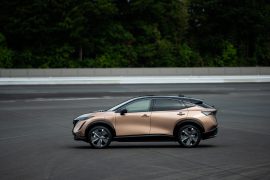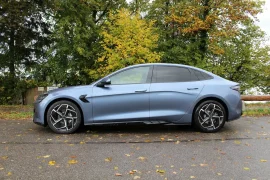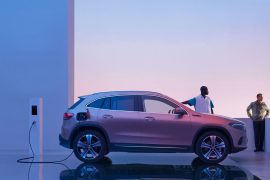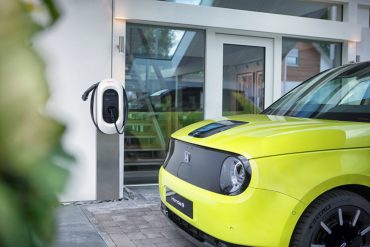The Kona Electric is a real bestseller. This is not surprising, as the efficiency of the small crossover is exceptional and the price-performance ratio is top. Now Hyundai has given the popular electric vehicle a model update.
Design
You can argue about design, but you can recognise the new Kona even without being a specialist in petitessen. The front end has a chic design, and the new “face” does without the reminiscence of a radiator grille. The headlight layout has also been modernised. Both the LED daytime running lights and the LED headlights with MFR technology are new. MFR stands for “Multifaceted Reflector”. The wheel arch linings now have vertical air intakes, which should improve the aerodynamics. All in all, the Kona has become smoother and – in new German – “sleeker”.
Colour theory
The Korean electric car, which is now also manufactured in the Czech Republic to meet the high demand, seemed to have only been available in two colours so far. At least, if you go by the vehicles you see on the road. So far, however, there have been eight exterior colours, and another eight have now been added. According to the manufacturer, there are even colour-contrasting paint finishes.
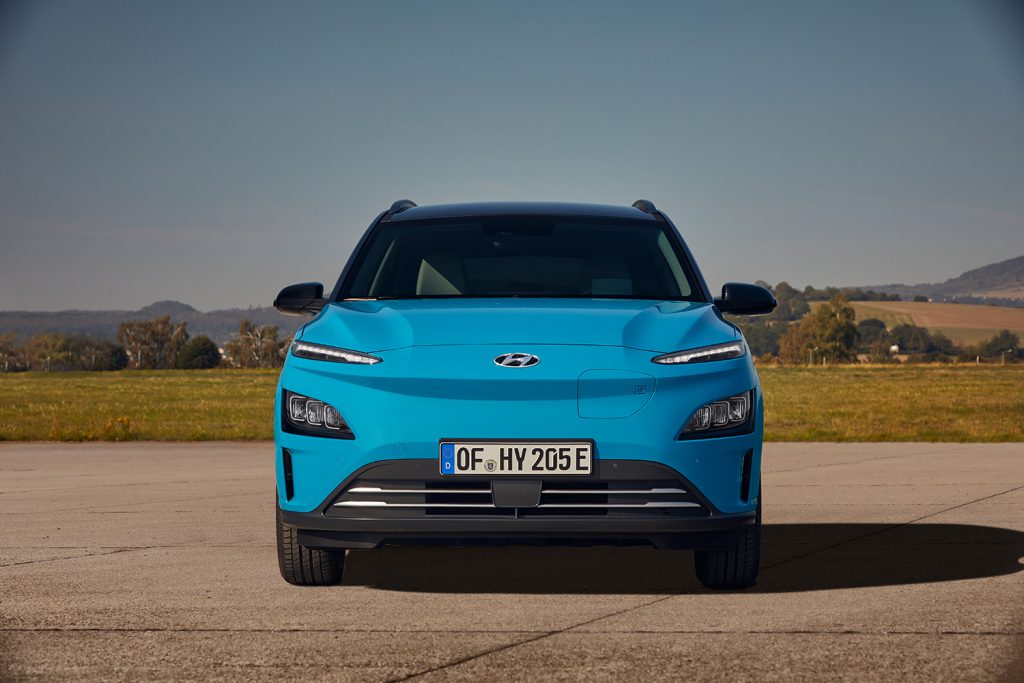
Interior design
A lot has also changed in the interior. The cockpit display now has a more sophisticated design. It is noticeable that the minimalist Audi or Tesla design has not been followed. Rather, one could speak of traditional, classic interpretations. The fuel gauge is still there, as is the “rev counter”, although it is now called the battery and power display. However, one thing has not changed from its predecessor. Numerous switches and controls still populate the dashboard. Even the display in the middle cannot do without another battery of switches. Very well. Speaking of the centre display. It’s relatively packed and bordering on overstimulating – with optional touchscreen operation. Apple CarPlay and Android Auto are fitted as standard anyway. All in all, the overall impression of the interior is now more upmarket.
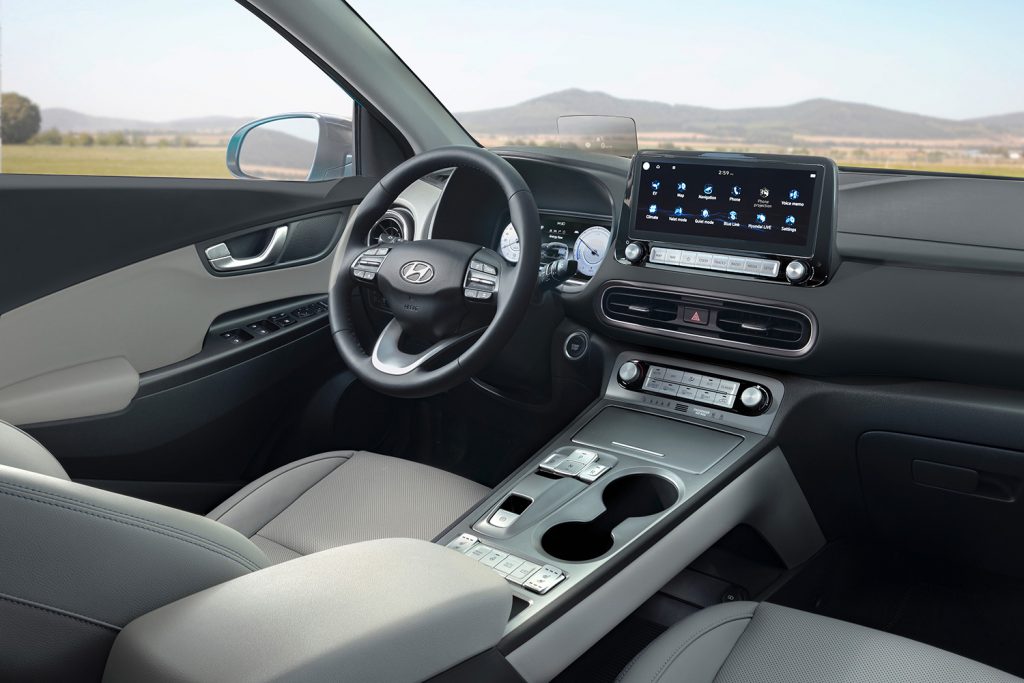
Architecture
Since the revised Kona also continues to exist as a combustion engine, there is still no frunk. There is simply not enough space. But Hyundai has already announced that the next electric vehicle generations will be developed independently of the “combustion engine design”. They will then be based on their own E-GMP platform, have 800-volt charging technology and will be launched under the new sub-brand IONIQ.
New functions and connectivity
The Bluelink® telematics system has an extended range of functions in the revised Hyundai Kona Electric. This includes, for example, the control of vehicle and smartphone functions by voice. The Bluelink® app on the smartphone displays range, battery status and remaining charging time. The innovative battery management system allows the driver to adjust the charging time to his or her departure time or to select times when charging power is available at particularly low cost. As soon as the Hyundai Kona Electric is connected to a charging station, the user can start and stop the charging process at the touch of a button on his smartphone via the Bluelink®App, as well as electrically preheat the interior in the cold season or cool it in the summer. Incidentally, a USB connection in the rear and ambient lighting in the footwells are new features.
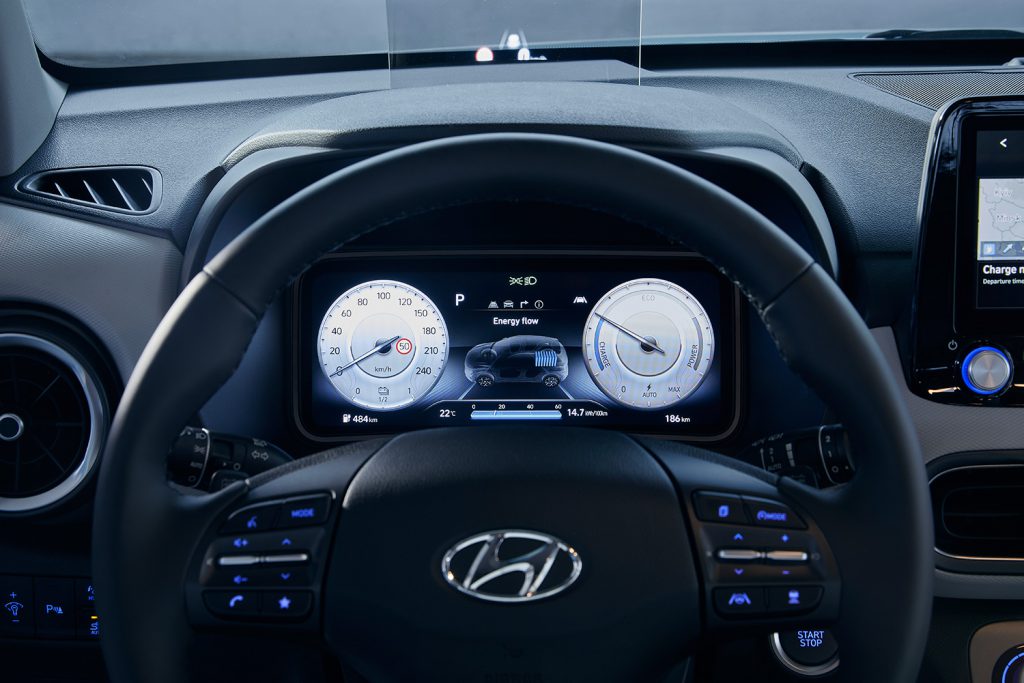
Range and charging times
As before, the Kona will be available in two versions. One with 64 kWh and 204 hp and one with a 39.2 kWh battery and 136 hp. Since the new model has not yet been homologated for the German market, the Koreans are not yet giving any fuel consumption figures or new ranges. Top speed remains at 167 or 155 km/h. Charging is now three-phase with an 11-kW on-board charger, but only as an option for the small model. DC charging now goes up to 100 kW; the previous model could be “charged” with a maximum of 75 kW. The 64 kWh version can be charged from 0 to 80% in 47 minutes. At a household socket, however, charging from 10% to 100% takes around 21 hours 30 minutes.
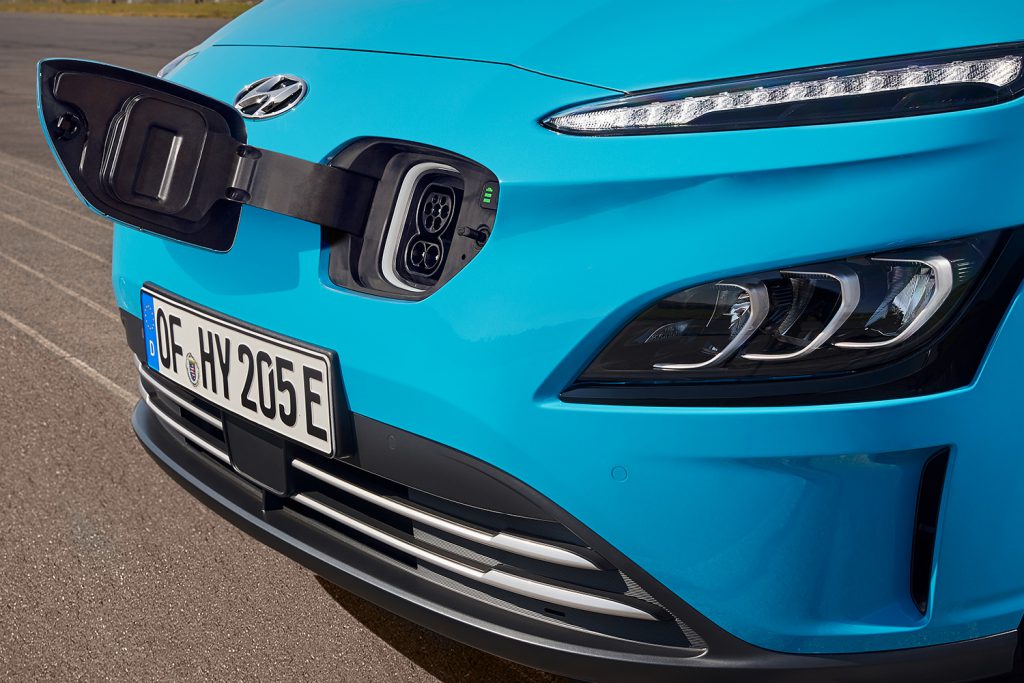
Safe is safe
In the new Kona Electric, Hyundai is expanding the familiar functions such as emergency brake assist with pedestrian detection, adaptive cruise control, lane departure warning and active lane departure warning, to name but a few. The range now also includes a rear cross-traffic alert system with emergency braking function, which detects crossing vehicles when reversing out of a parking space, for example, and an active blind spot assistant with a park-out function. Both systems not only warn the driver in the event of danger, they also actively intervene themselves through targeted braking intervention to avoid accidents. Also new on board is an approach warning system that alerts the driver if he or she does not react when the vehicle in front starts moving again, for example at a traffic light.
In addition, there is an “exit assistant” that warns acoustically if there is a risk of danger from road users approaching from behind when exiting the car. The system also prevents the rear doors from opening. The occupant alarm warns with a horn and hazard warning lights if the driver locks the car even though there are still occupants in the rear seats.
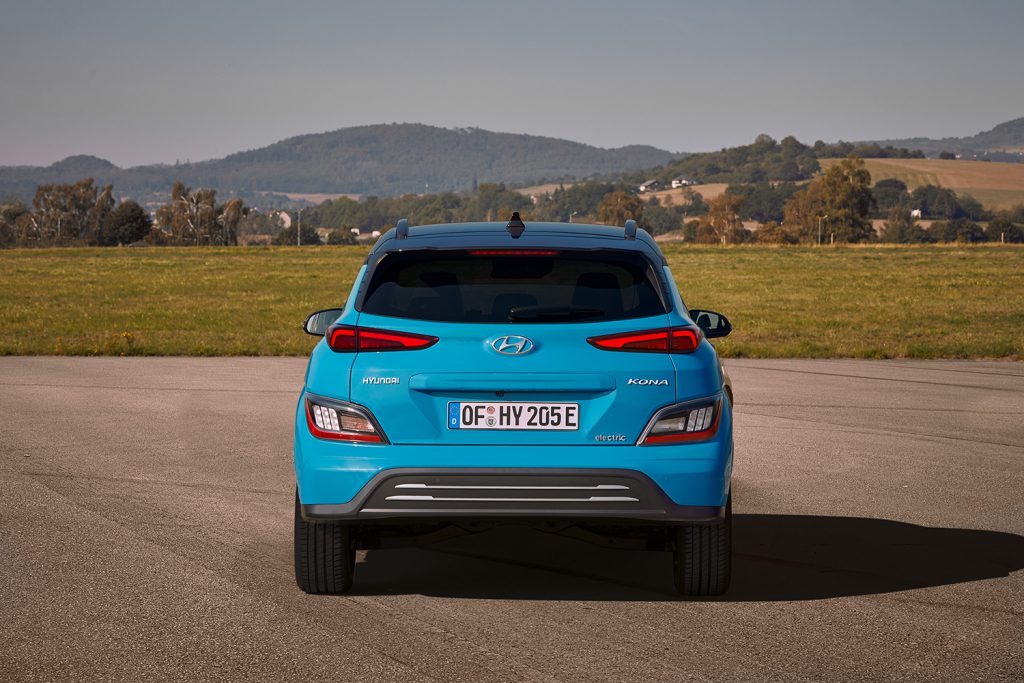
Text: Bernd Maier-Leppla/Peter Grett
Photos: Hyundai

